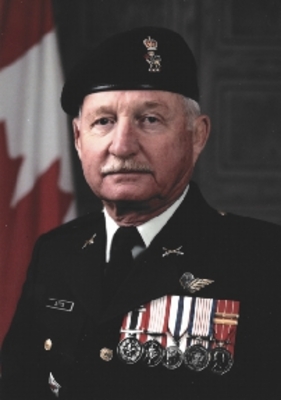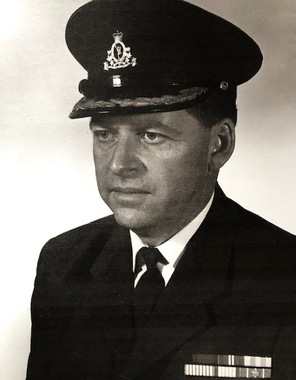I’ve put something similar to this before, but it seems it might bear repeating on the 75th anniversary of the start of the battle for Normandy.
While there were no allied Special Wireless units that landed on that day, there were hundreds involved in Canada’s No. 2 and No. 3 Special Wireless Sections, that landed in two subsequent waves. Their job was to intercept the communications of the Germans as they reorganized from the shock of the invasion. As these tactical operators waterproofed their trucks and lined up to board the landing crafts, their military and civilian colleagues, located at collection sites along the southern coast of England and on the Channel Islands, and the Navy’s Radiomen Special who operated from the English Channel, were intercepting German communications to judge the effectiveness of the attacks; and most importantly to help determine the German High Command’s next moves.
This comes to mind, not just because yesterday was the kick off to the 75th anniversary of the landings, but because I recently began to transcribe a Special Wireless veteran’s notes about his time with No.3 Special Wireless Section Type”A”. I met Mr. Don Warren in 2001, just weeks before 9/11. At our meeting he included his children, to whom he’d spoken little of his wartime service. It was quite satisfying to watch their reactions as he’d discuss things like Normandy, Ultra, Enigma and signing the Official Secrets Act. After 50-years of silence he was slow to open up, but I was quizzing him pretty precisely and I shared some of his insight/jokes about copying the unique ‘stick’ of the German operators. In no time he was relaxed and the tap was turned on for the first time in decades. He Was talking about trying to locate the V1 and V2 rocket launch sites by DF’ing their pre-launch activity, so counter attacks could try to destroy them before the rockets got off the pads. By the end of the afternoon his kids (themselves in their late forties) were in a bit of shock by what their dad did during the war. Up until then he only said that he worked a radio for a headquarters; and would change the subject whenever it came up. After the war he returned home, got a degree in education from Queen's University and taught in the Smith Falls / Chaffey's Locks area - retiring as a high school principal.
Several months later, while in Bosnia, I would receive a package from Don. After our conversation he realized how little was available on what his unit did and he was fearful that it would be lost to time. He’d jumbled down some of his memories from that time period and sent them to me. Forty-two hand written pages. I scanned copies and sent them to the Museum in Kingston and the main CWM, but in the post 9/11 frenzy the next fourteen years would be a blur for me and not much else would happen on the file.
I just started, recently, to transcribe his notes and add some amplification from my notes/memories of that meeting. Attached are a few pictures from Don. Showing their first operational setup in Amblie, just 6-km behind where the Juno Beach Centre is located; operators of the unit in Holland and a V-1 rocket as it overflew their position on its was on its way to rain explosives on either the port of Antwerp or England. They had just detected the launch site when the rocket launched. They knew it had to be very close, so he grabbed a camera and looked for the rocket. It went right over their heads. He remembers it as a disappointing moment. If they only had located it 5 minutes earlier a group of Typhoon fighters were on standby to rocket the location. They would still try and destroy the launch site, but too late to stop this one flying bomb.
Here are a few quotes from Don’s memoirs “…. this was exceedingly valuable in Normandy because we could follow each unit when it moved. If a Panzer Division moved from its position into another, even if its call sign changed, we knew the new call sign he was using. It certainly helped in Normandy when locating and destroying enemy headquarters was so essential….”
When they landed their vehicles at Juno Beach, just before dark, they were marshalled to an assembly area from which they would set out in the morning. “…in the morning, I remember we were somewhat alarmed to find German mine signs all through the area we were occupying during the night. It was a miracle that we had not lost men that night because some of us slept under the trucks…” The engineers were quickly called in to rectify the problem.
“..That morning we moved forward to a little French village called Amblie and proceed to setup our equipment on a side hill, camouflaged it and set-up our aerials as far aways as possible from the vans, In about 6 hours we were in full operation with our HROs operating. A link to the British in England established as well as a link to our HQ - the British Second Army…” The Canadian 3rd Infantry Division was part of the Second Army and since Type “A” Special Wireless units reported intelligence to Corps or Army level - their collection was ingested at the Corps level. Later in the war, as the three Canadian Divisions came together, all three Canadian Special Wireless Sections would be reporting to the Canadian Army - as well as whichever British units they might be supporting. They often worked side by side with American units doing intercept work. Don remembers No.3 SW Section working closely with an American intercept unit near the Ardennes Forest during the Battle of the Bulge.
“It was no uncommon thing to have a German H.Q. we had identified and located with our D/F go off the air in the middle of a transmission because it had been dinged by a rocket firing Typhoon, whose headquarters were receiving our information. ..”
In addition to feeding their Corps level HQ G2 section with tactical targets, who used a mix of plain language and low-level ciphers/encryption, they also fed strategically back higher level intercept to the UK. “… I do remember a British van equipped with an officer and three NCOs that joined our unit. We know it was being used for transmission back to British HQ for Ultra and Bletchley Park…”
He left small town Chaffey's Lock to be a volunteer soldier in the big adventure of World War Two. In a few short years, he would cross the Atlantic, see his best friend die in front of him during a training accident, enter France via a landing craft in Normandy, help intercept and find Panzer Divisions and SS units all the way from France, across the Netherlands and eventually over the Rhine River. In the process he'd see the devastation and thousands of civilians killed in and around Caen, and the starvation purposely inflicted by the Nazis in the Netherlands. But he'd also feal the indescribable joy of the liberated Dutch and the beauty of Paris as they turned on the evening lights of the city for the first time in years. Even his return to Canada would not be without memorable moments. He came home via the Queen Elizabeth liner from South Hampton to New York and onward to Kingston by train. He remembers Prime Minister Churchill being on board the ship and addressing them just after they'd set sail. It didn't take long for someone senior to recognize that Churchill was "... into the sauce and he was soon cut off..."
From these eventful years in Europe he was all too happy to return to quiet Chaffey's Lock where he proceeded to Queen's University for a degree in education and then back to the Chaffey's Lock / Smith Falls area where he married a childhood sweetheart, raised their children, advanced from teacher to distinguished principal and passed away in the town he loved so much, in 2014, at the age of 93. Thanks for helping us ensure that your unit wasn't lost to history Don.
/arc-anglerfish-tgam-prod-tgam.s3.amazonaws.com/public/R7AEIPTBABBBBMVOWVXCHUZ7HQ.JPG)

